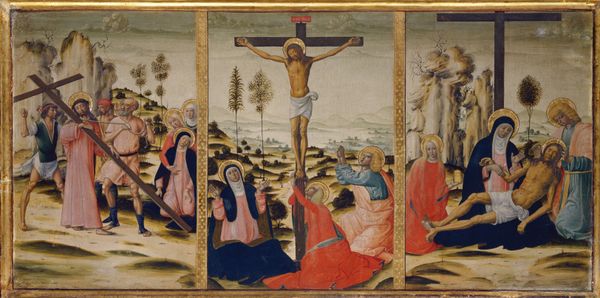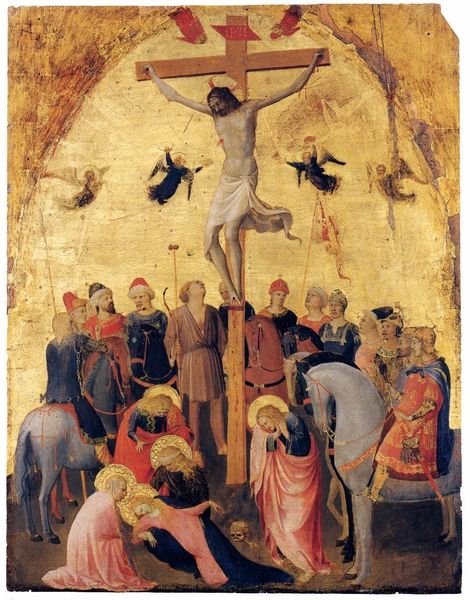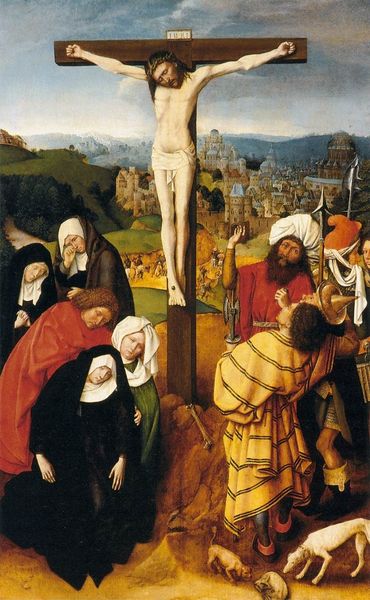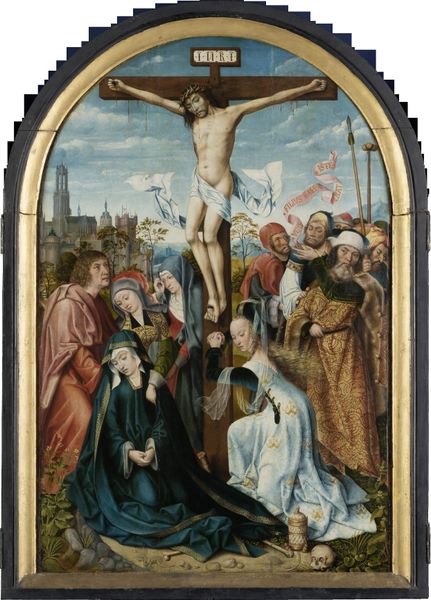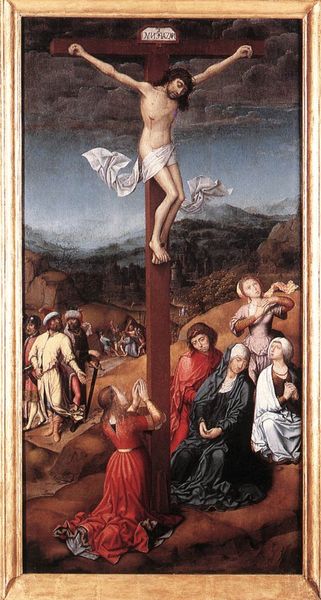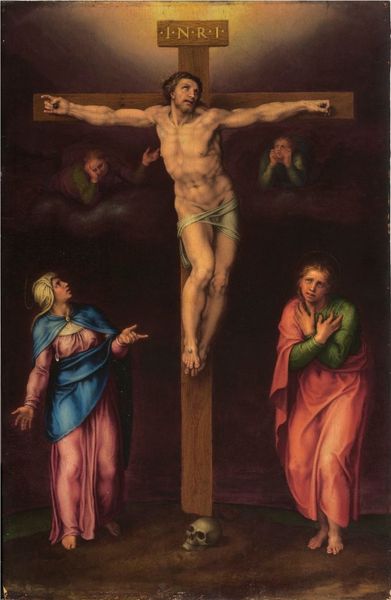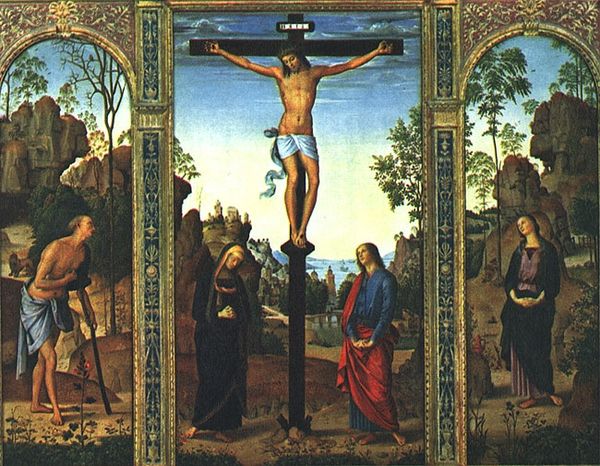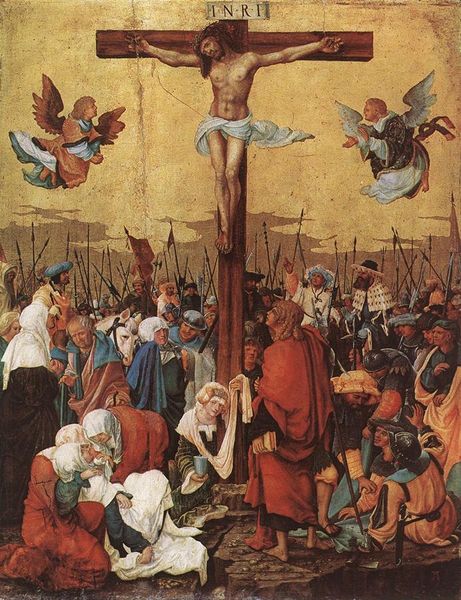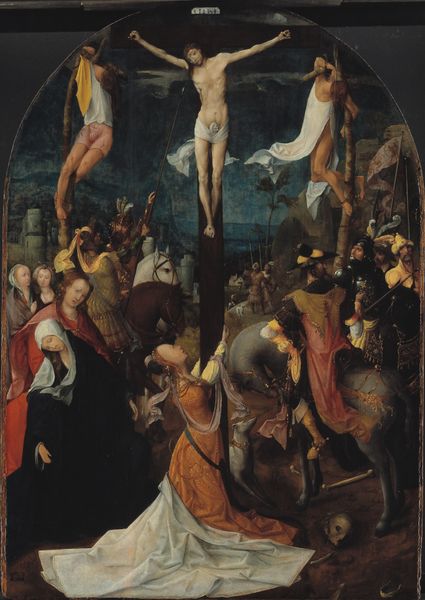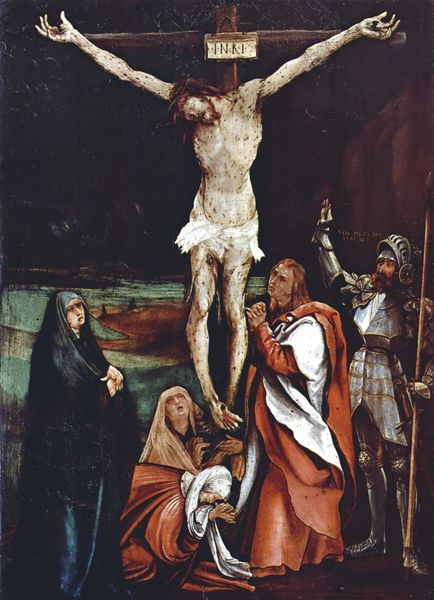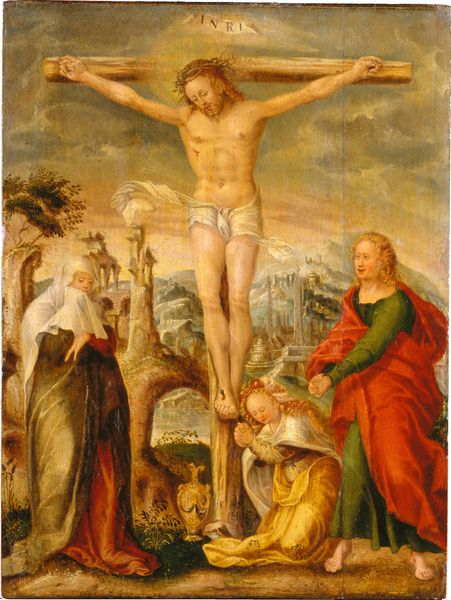
panel, painting, oil-paint
#
panel
#
painting
#
oil-paint
#
figuration
#
oil painting
#
jesus-christ
#
christianity
#
painting painterly
#
crucifixion
#
history-painting
#
northern-renaissance
#
early-renaissance
#
christ
Dimensions: 191 x 58 cm
Copyright: Public domain
Curator: Standing before us are the side wings of Dirk Bouts' Passion Altarpiece, created around 1455 using oil paint on panel. Editor: What strikes me is the contrast—the raw pain of the crucifixion in the left panel against what appears to be Christ's almost serene resurrection on the right. The figures feel stiff, staged almost, despite the obvious emotion they're meant to convey. Curator: The panels offer contrasting emotional registers, absolutely. These side panels were originally part of a larger altarpiece, positioned to flank a central scene. The northern Renaissance, where Bouts was working, favored meticulous detail, and he does use it to enhance the religious drama playing out in the artwork. The work demonstrates the culture of the time, and art's place within religious institutions. Editor: The composition draws me to reflect on systems of power as well, namely what it symbolizes to display Christ, suspended and vulnerable in the left wing, positioned next to him emerging from death. There is an entire population present, marking Christ's suffering as communal. What does the emotional tenor of that period, during and after the Plague, say about the politics of grief being displayed through the central religious figure? Curator: Well, artistic patronage certainly played a significant role. Altarpieces were often commissioned by wealthy individuals or religious orders. The subject matter—Christ's passion—reinforced established theological doctrines and served as a public statement of faith and wealth. Editor: True, but that public statement isn't monolithic. Consider the expressions on the faces of the women at the cross's base, in the left panel; are those really just expressions of piety or a deeper critique against those in power at that moment, as the men observe, passively? And on the right panel, we also see violence on the part of a soldier being thrown down to emphasize Christ's triumphant resurrection. I think that violence has broader significance, and could be seen as resistance toward oppression. Curator: I concede that the painting can encourage dialogue around issues of gender, identity, and oppression in art historical context. Editor: Precisely. To really grasp the historical weight and implications of works like these, we have to unpack how these narratives play out today. Curator: Thank you for giving us a perspective on the work, seen through your experiences and knowledge of contemporary intersectional theory, bringing us fresh and relevant insights on a piece that's centuries old.
Comments
No comments
Be the first to comment and join the conversation on the ultimate creative platform.
